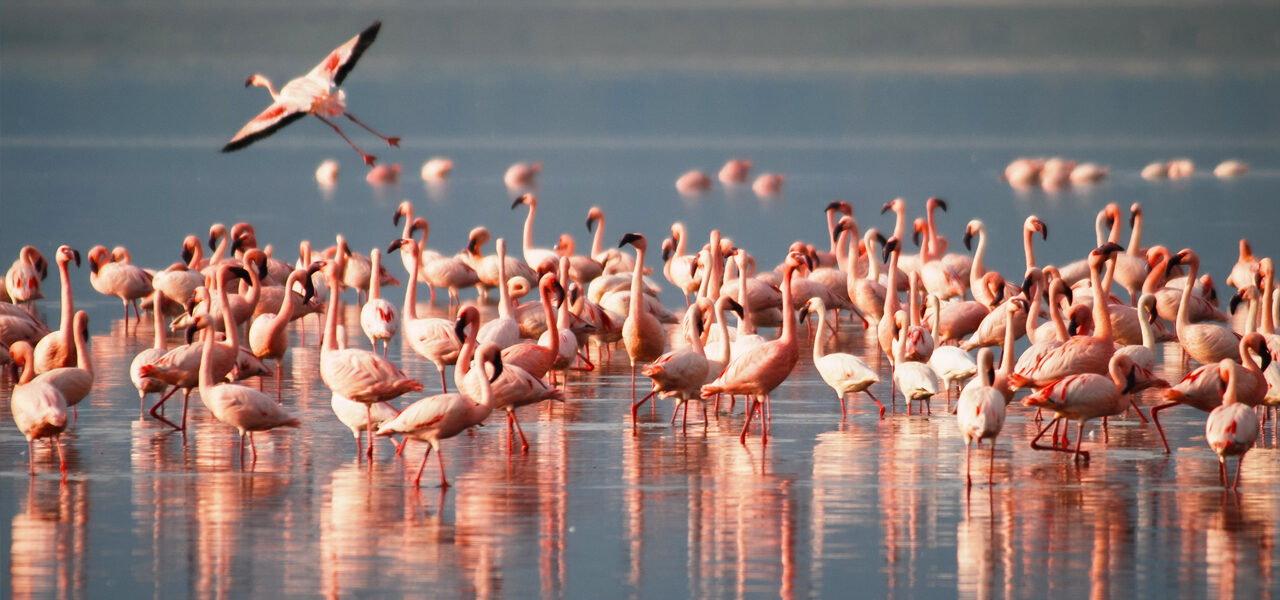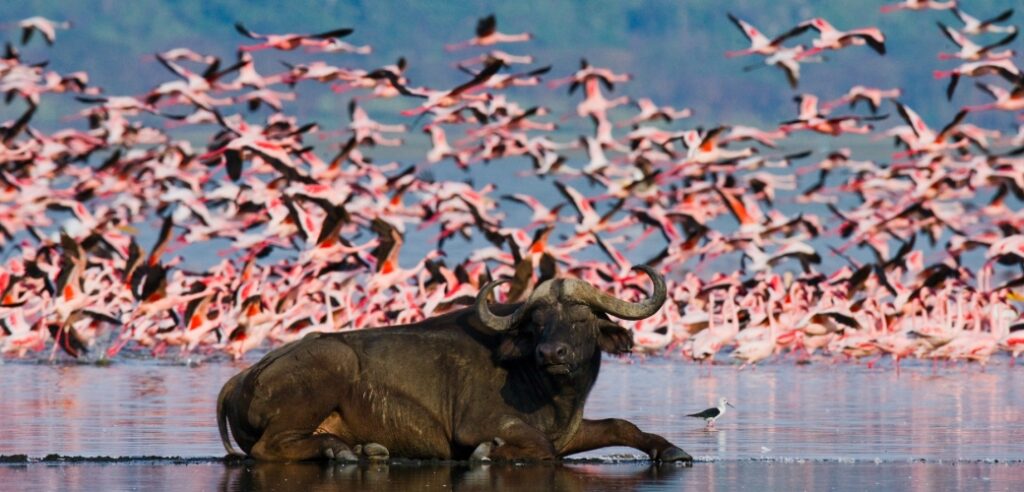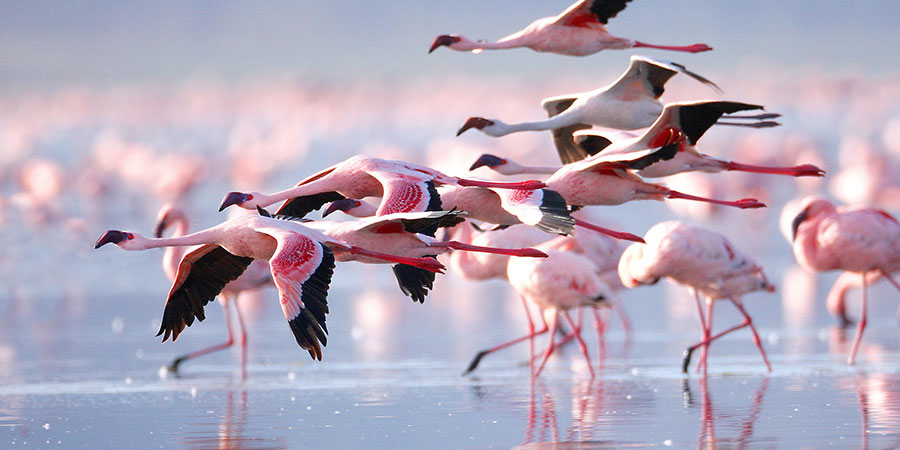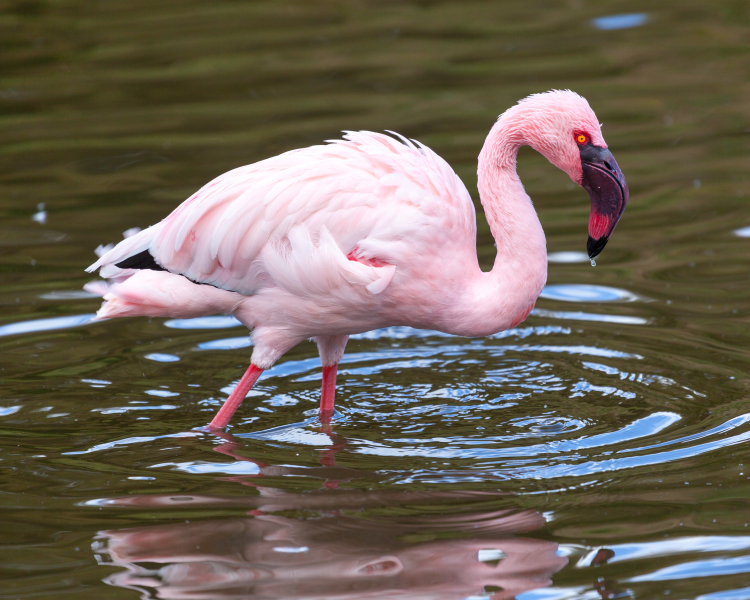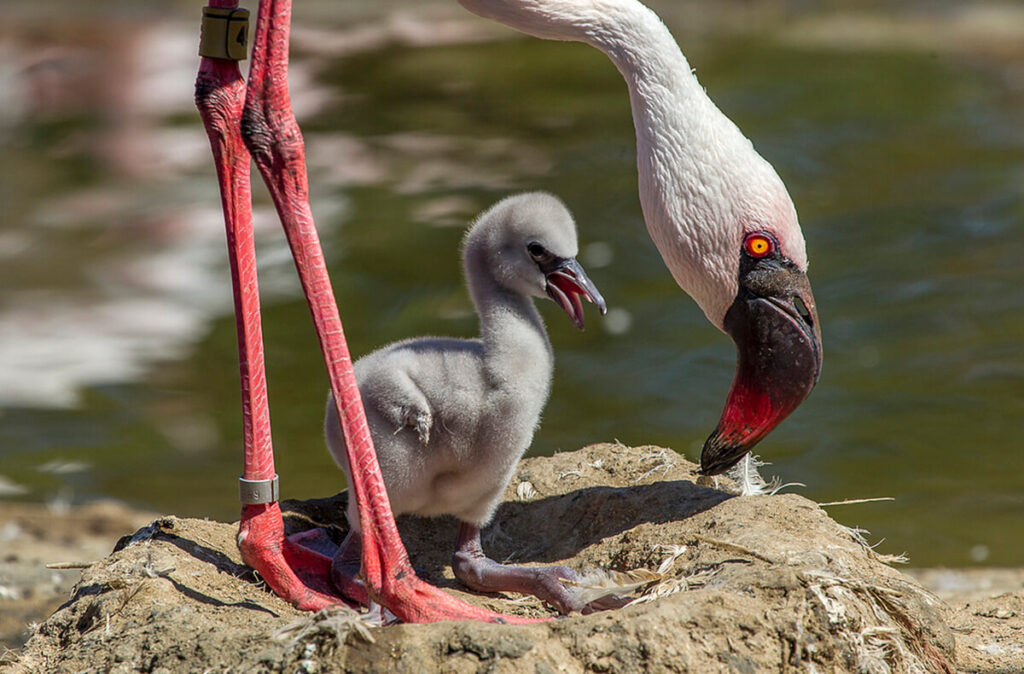The flamingo is a strange, Pink-feathered creature that spends most of its daytime resting on impossibly thin “tooth-pick like legs covered in hard protective scales to withstand that harsh conditions from the potentially fetal alkaline lakes where they are food. If you continue to read this article, you will find out why the Flamingos are born with grey feathers but turn Pink, and also know the best places to see flamingos in East Africa; Uganda, Tanzania, and Kenya
Where to find Flamingos in Africa
The soda lakes of The Great Rift Valley in Eastern Africa are the preferred habitat of this most iconic bird. Running from Northern Syria all the way to Mozambique, the Great Rift Valley is a vast area of anthropological and geological importance; widely regarded as the birthplace of humanity, the rift represents the gradual separation of the African continent and will one day host a new ocean.
The soda lakes are just one of the area’s distinctive geological features. These flat, low lakes are characterized by extremely high alkaline levels – the result of a unique combination of climatic and geological conditions.
The unbelievable part: Whilst most animals would quickly perish in this toxic environment, the flamingo thrives. The prehistoric conditions of the soda lakes are perfect for algae and brine shrimp, staples in the flamingo diet, which it sifts with its specially shaped bill. In fact, this diet is also responsible for the distinctive pink color of the bird – interestingly, flamingos are born with grey feathers that gradually turn pink in the wild because of a natural pink dye called canthaxanthin contained in the food they eat: brine shrimp and blue-green algae.
They’re also uniquely adapted to withstand the harmfully-alkaline waters. When they have no access to fresh water, for example, they’re able to drink boiling-hot alkaline water from the glaciers dotted around the lakes and filter it using their lengthy throats. Their gangly legs, furthermore, are covered in resilient scales allowing them to stand for long periods in otherwise unbearably toxic conditions.
The Best locations find, see & Photograph Flamingos in Africa
Approximately up to two million of these incredible creatures congregate between three of Kenya’s Great Rift Valley lakes Lake Nakuru, Lake Bogoria, and Lake Elmenteita. Although each of the lakes offers visitors the chance to see flamingos in their natural habitat, Lake Elmenteita is an exceptional location for keen photographers; lesser-known than the other soda lakes, it provides the opportunity for breathtaking photos, set against a dramatic backdrop.
Lake Elementaita, or Ol muteita (‘place of dust’) as it’s known in the Maasai language, is a panoramic expanse that harks back to a primordial era. The shallow, bubbling lake is framed by the ‘Sleeping Warrior’ (a single hill so named on account of its resemblance to a reclining figure) and Ol Doinyo Eburu (a dormant volcano).
Visitors will see flamingos wading gracefully through the noxious waters, and they may also catch sight of the lake’s other notable inhabitants. Amongst these is the Great White Pelican; Lake Elementaita is the only breeding ground for these iconic birds in East Africa, and it’s possible to observe their nests on rocky outcrops throughout the lake.
In Tanzania, Flamingos can be found at Lake Natron at the base of Africa’s only active volcano, Oldonyo Lengai.
On a safari in Uganda, you can spot Flamingos in the areas of Queen Elizabeth National Park located on the Western arm of the Great East African Rift valley. Soda lakes; Bunyampaka, Katwe, Nyamunuka, Maseche and bagusa are some of the best places to see Flamingos in Uganda. Flamingos in AFRIC

